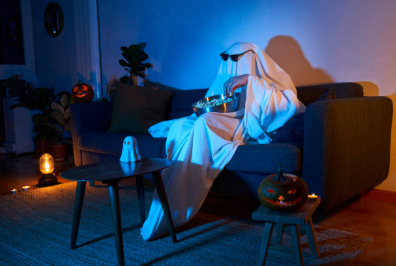When people talk about classic horror movies, a few names rise up like ghosts from the fog of cinema history: The Shining (1980), Silver Bullet (1985), Poltergeist (1982), and Halloween (1978). Each of these films stands as a pillar of what makes horror timeless. Not just because of the monsters or murderers that lurk within them, but because of the distinct methods of fear they employ.
Together, they form a masterclass in how horror reaches into the human psyche, through isolation, inevitability, invasion, and presence.
Stanley Kubrick’s The Shining is often cited as one of the most psychologically terrifying films ever made.
The fear it inspires doesn’t come from jump scares or grotesque imagery, though it has both, but from the slow, suffocating descent into madness.
The Overlook Hotel becomes a character itself, whispering to Jack Torrance until he turns on his family. The fear here is internal, the idea that isolation can warp even a loving father into a monster.
Kubrick’s method of fear is psychological decay. We watch Jack’s sanity peel away in real time, and that realism is more horrifying than any ghost. The long tracking shots through empty hallways, the unnatural symmetry of the hotel, and the chilling stillness of the snowed-in setting all contribute to a sense of inescapable dread.
Fear doesn’t chase the audience. It settles over them, quiet and cold, until it becomes unbearable.
By contrast, Silver Bullet, based on Stephen King’s novella Cycle of the Werewolf, leans into a more traditional monster narrative.
But beneath the “creature-factor” surface lies a deeper fear, the horror of the familiar turned monstrous.
In small-town America, where everyone knows everyone, a werewolf is terrorizing the community. The twist is that the monster is someone from within, forcing viewers to confront the unsettling idea that evil might be hiding behind a friendly face.
The method of fear in Silver Bullet is one of hidden danger. It’s not the werewolf’s claws that disturb the most, but the suspicion that grows in the spaces between attacks.
Every friendly handshake or polite smile could belong to a killer. This approach grounds the supernatural in the ordinary, making the horror feel uncomfortably close to home.
Tobe Hooper’s Poltergeist, produced by Steven Spielberg, redefines the “haunted house” trope by targeting the one place we’re supposed to feel safest…our home.
When spirits invade the suburban Freeling household, they don’t merely haunt. They disrupt. Toys come alive, furniture moves, and the TV becomes a portal for the dead.
The genius of Poltergeist lies in how it takes the comforts of modern family life and turns them into tools of terror.
Its method of fear is the corruption of the familiar. The home, the family, even technology itself, all are subverted. The fear isn’t just in the supernatural events but in what they represent: that the stability of ordinary life can crumble without warning.
“I was ten years old and I’m pretty sure I watched it without my mom knowing. It scared me senseless. especially the clown underneath the bed. It prevents me from watching the ‘IT’ movies,” Ms. C. Hall said.
Poltergeist weaponizes white picket fences, reminding viewers that horror doesn’t need to lurk in dark castles or remote hotels; it can live right in the living room.
John Carpenter’s Halloween stripped horror down to its bones and, in doing so, defined an entire subgenre.
Michael Myers isn’t a man. He’s the Shape, a blank embodiment of evil with no motive, no empathy, and no explanation. The film’s suburban setting and minimalist score amplify the terror, grounding the slasher formula in a chilling realism.
The method of fear here is the inevitability of evil. Unlike The Shining, where madness builds over time, or Silver Bullet, where the monster hides in human form, Halloween presents evil as unstoppable and unreasoning.
The slow, silent pursuit of Laurie Strode becomes a metaphor for the way fear itself stalks us. quietly, persistently, and without mercy.
Each of these films became a classic not simply because they scared audiences, but because they understood fear as something personal.
The Shining attacks the mind, Silver Bullet the community, Poltergeist the home, and Halloween the body and soul.
They reflect different anxieties of their times. family breakdown, suburban vulnerability, loss of innocence; but their methods still resonate because those fears never truly disappear.
“Thrillers build suspense and bring to fruition what you are guessing. It makes you think and build on that anticipation,” Caden Collins LHS Senior said.
Modern horror often relies on spectacle and shock, but these classics remind us that the truest horror doesn’t always scream… it lingers. It’s the echo of Jack’s “Here’s Johnny!” through the hallway, the howl of the werewolf in a quiet town, the flicker of static on a TV screen, and the silent shape standing across the street. These films endure because they remind us that fear wears many faces… and all of them look a little bit like us.
